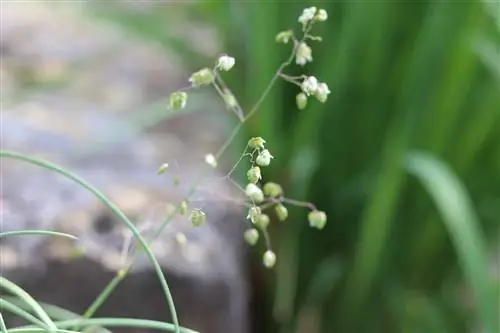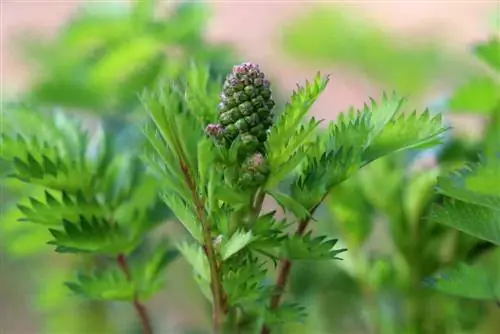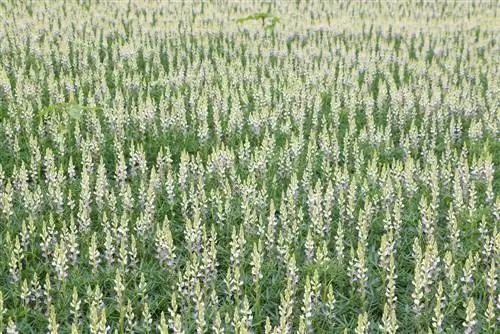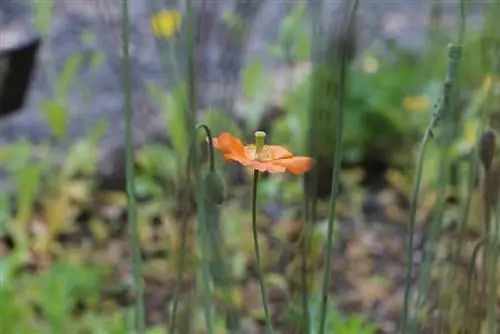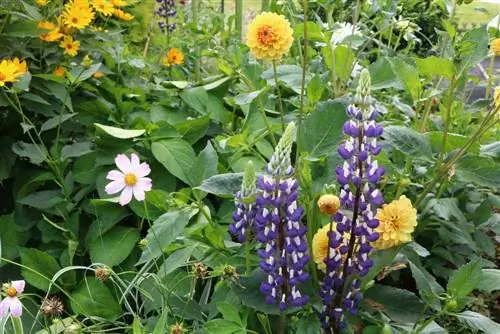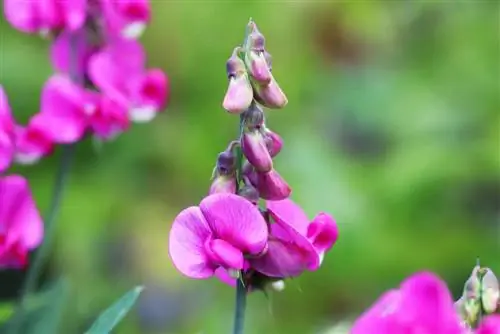- Author admin [email protected].
- Public 2023-12-17 03:39.
- Last modified 2025-01-24 12:45.
Even if the quaking grass is easy to care for, there are still a few things that need to be taken into account.
Sowing the quaking grass
The quaking grass is frugal even when sowing. Sowing can be carried out just a few weeks after cultivation. Simply drill small holes in the moist soil and insert the seedlings. When sowing, the young clumps of quaking grass should be divided into around 4 to 8 individual plants. The first few days after sowing, the young plants are still very sensitive. If the place is very sunny, it is advisable that the young plants are shaded. Sufficient watering is also important in the first three weeks. The soil should always be moist, but never too wet. It is important to find a he althy balance here. The first flowers appear as early as May and last until around August.
Care for quaking grass
When it comes to quaking grass, make sure that the soil is not too rich in nutrients. The ornamental grass also does not tolerate fertilizer. This ornamental grass particularly prefers sunny places. Even if the soil is dry for a long period of time, it doesn't really affect the quaking grass. It is undemanding and tolerates drought as well as short-term flooding. Even if the plant generally tolerates drought well, you should not forget to water on hot days. The soil should not become too dry, especially in direct sunlight, even if the quaking grass only needs moderate water.
Overwintering quaking grass
As with most plants, pruning should be done in spring. This results in two advantages at once. First, the dried leaves protect the ornamental grass from the cold. Secondly, pruning in autumn can cause rot. Although the quaking grass is winter-resistant, it always tends to rot. That's why you should take a look at the plant every now and then, even in the cold season.
Propagate quaking grass
This ornamental grass can be propagated primarily by sowing seeds. In spring or autumn, the quaking grass can also be propagated by division. It is sufficient if you consider planting in mid-March. The germination rate for quaking grass is almost 100 percent, although it doesn't require a lot of care. The seeds are pressed into moist growing substrate. If 25 percent perlite rock is mixed into the flower pots, the germination rate can be increased a little. Perlite is a natural product that can not only store water better, but also heat. The earth is also better ventilated. The first seeds germinate after just 10 to 12 days. However, a temperature of around 20 to 25 °C should be observed. The soil in the flower pots should always be kept moist. However, care should be taken to ensure that no waterlogging occurs. The young seedlings do not tolerate these particularly well. The quaking grass also sows very heavily in the garden. If this is not desired, this situation can quickly become a pitfall. That's why the ears of this ornamental grass should be cut off immediately after the inflorescence.
Diseases and pests
The quaking grass is a very robust plant. However, if this is cut back in autumn, rot can occur. If this ornamental grass is too close, it can lead to mold growth. That's why there shouldn't be more than 5 to 7 plants per square meter. Basically, the quaking grass hardly has any pests.
Cutting quaking grass
As with most grasses, pruning is not recommended until spring. Since this grass sows very heavily, the ears should be cut after the inflorescence. If the flowers are wilted, the panicles are simply cut out. This is the richly branched inflorescence of the quaking grass.
Location for ornamental grass
The ornamental grass prefers sunny places. However, partially shaded locations are generally tolerated well. The soil should be neutral to slightly acidic. In addition, the floor should not be too hard. A permeable yet dry soil is ideal for this ornamental grass to grow and thrive. Sandy soil in particular is particularly ideal and favorable for this grass. When planting, make sure that the minimum distance between the plants is around 30 to 40 cm. This means that no more than 5 to 7 plants should be planted per square meter.
What you should know about quaking grass in brief
The quaking grass is a frugal plant. The location can be sunny to partially shaded. When it comes to soil, make sure it is permeable. This ornamental grass does not tolerate fertilizer particularly well. The ornamental grass is winter-hardy. Pruning should only be carried out in spring, otherwise rot may appear. The robust plant hardly has any pests, but if it is planted too close, mold can develop. The quaking grass is also frugal when it comes to water requirements. Even drought is tolerated well. Likewise, short-term water flooding does not affect the plant.
The quaking grass is particularly popular in farm and wild gardens. It can also be used in wildflower bouquets and for green roofs. Many plant lovers dry the grass and use it for dry arrangements and the like. The quaking grass is a perennial, persistent and easy-care plant.
- Location: preferably sunny
- Plant substrate: slightly acidic to neutral, permeable and quite dry, lean, by no means too nutrient-rich
- Planting distance: 30 to 40 cm is ideal, 5 to 7 plants per m²
- Watering: Quaking grass requires little water, tolerates prolonged drought and occasional flooding
- Fertilizing: under no circumstances
- Cutting: if the flowers become unsightly, cut out the panicles; otherwise pruning in spring, if pruning in autumn tends to rot
- Overwintering: sufficiently hardy, even without protection, looks exceptionally good in winter, especially when there is frost
- Propagate: after sowing, seeds germinate after 10 to 12 days at 20 to 25 ˚C, keep the soil moist, but never wet, use potting soil; Quaking grass can also be propagated by division
- Diseases and pests: robust plant, hardly any pests, too close a stand can lead to botrytis fungus (mold)
- More tips: Cut quaking grass to dry before it is ripe and let it dry upright
- Benefit: large and medium-sized quaking grass is often used for feeding ornamental birds, especially budgies
Conclusion
Quick grass has become rare in the wild. Over-fertilized or even fertilized soils are to blame. Quaking grass thrives best on poor soils. The grass looks good in the garden. It is absolutely easy to care for. The flower spikes can be used well for dry bouquets, but also look great in the bed in winter. All in all, quaking grass is something for every sunny garden.

